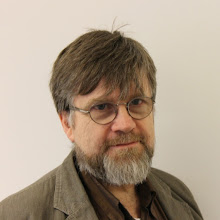My scheme uses the (inevitable) Arduino and DDS combo to generate an RF sweep, which is attenuated and passed directly into the Radio under Test. The resulting output voltage to the speaker (or headphone) is sampled by an RMS to d.c. converter and read back to the Arduino, which reports both the RF frequency and the level of the generated AF signal to a program running on a host computer, such that a graph can automatically be produced...
I have implemented the Arduino / DDS combination using a MEGA and an early prototype m0xpd DDS shield I had lying around...
My initial tests today have been for lower side-band on 40m, so I arranged for the RF sweep to be DOWNWARD from a start frequency, FStart, for a span of 10 kHz in 50 Hz steps. The Radio under Test would be tuned to FStart, such that the resulting AF output should be an UPWARD sweep from 0 to 10 kHz (more explanation below...).
The code was a simple hack of my earlier sketch for the IF work.
For the sake of speed and convenience, I implemented the RMS to dc conversion (what we might also call "detection") operation using a Bruel and Kjaer Electronic Voltmeter (seen in the image at the head of this post), which conveniently has a d.c, output proportional to its meter reading. The d.c. output was fed straight into pin A0 of the Arduino.
My first tests were made on the "Breadboard BITX" radio...
A processing sketch running on the PC initiated the sweep on the Arduino and collected and graphed the response data, which is shown below...
This is the overall receiving response of the radio from RF to audio, measured and graphed automatically with an (approx.) S9 input in about 15 seconds! Note that it is not "calibrated" in absolute "sensitivity" terms - I'm interested only in the shape of the receiving response.
See how the frequency axis is labelled as running DOWN from FStart at 7,117 MHz to FEnd at 7.107 MHz. This downward sweep of RF is interpreted by the radio, tuned to 7,117 MHz in lower side-band mode, as an upward sweeping audio tone - which is why the graph above is formatted the way it is.
Think of the frequency axis as being not only the (falling) RF axis (seen at the bottom of the figure below) but also - equivalently - the (increasing) AF axis (seen at the top of the figure below) ...
OK - now I've got this handy new trick, I can use it to prove to you that my Arduino SDR radio's Rx bandwidth really does change - just as I claimed last weekend.
I set up the Arduino SDR rig as the Radio under Test...
and put a voltmeter on the wiper of the potentiometer that generates the control voltage for Rx bandwidth. Then I made a bunch of receive bandwidth measurements at increasing settings of the control voltage...
As you see, there's a nice smooth increase of Rx bandwidth with increasing control voltage, all the way up to the maximum.
Last of all (for the moment) I took out my multi-band, BITX-inspired development platform and set it up for 40m...
I was quickly able to confirm what is obvious from listening (particularly after listening to the breadboard BITX or - even more so - the SDR): the receiving bandwidth is too narrow...
This is a great way of directly measuring the overall response of a radio system - warts and all - all the way from incoming RF to the output to the speaker. It works like a dream. I am going to neaten it up - possibly by replacing the Bruel and Kjaer element with a custom piece of electronics and by making the RF side a little more "formal" - because I have some important tasks for this new measurement technique in the near future.
Watch this space!
...-.- de m0xpd














































